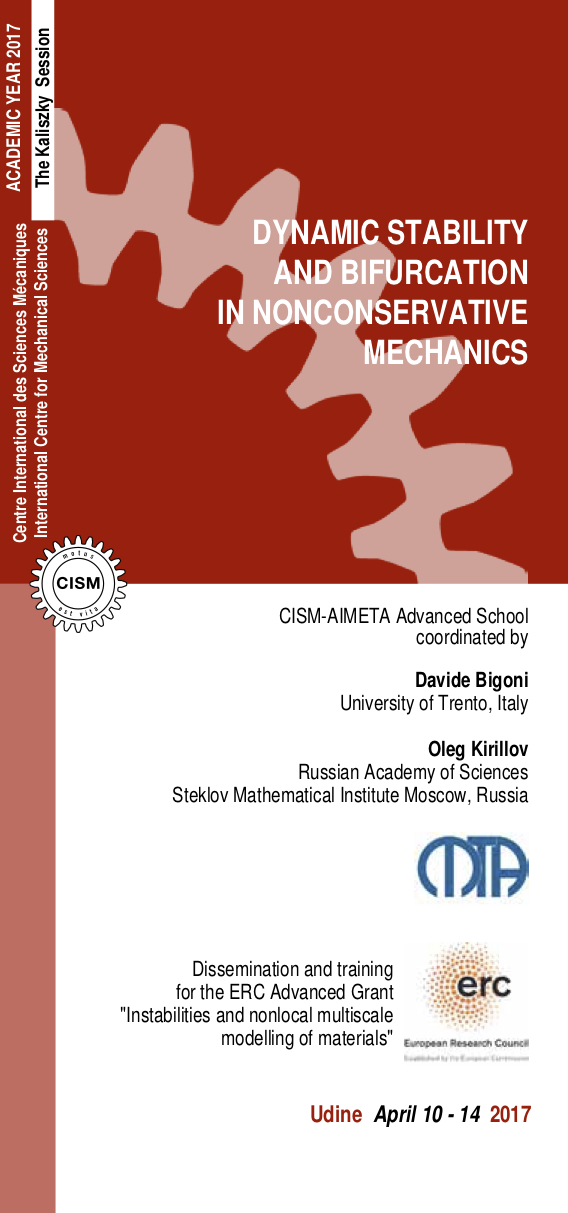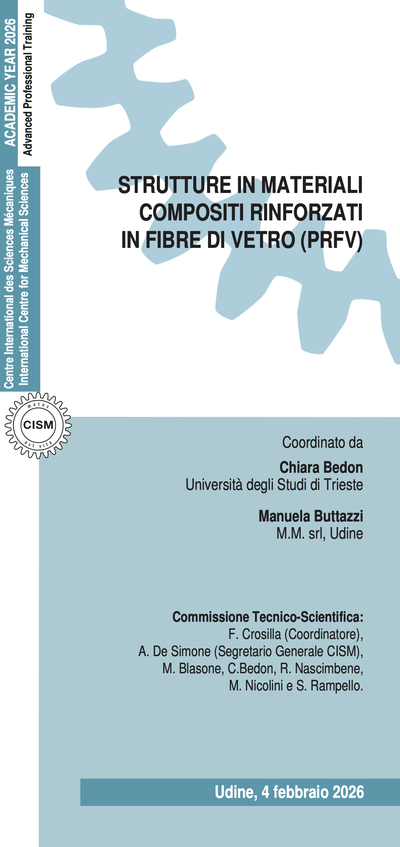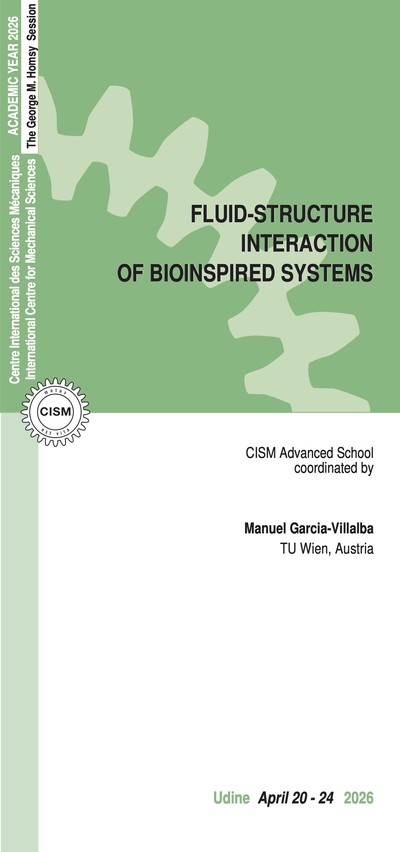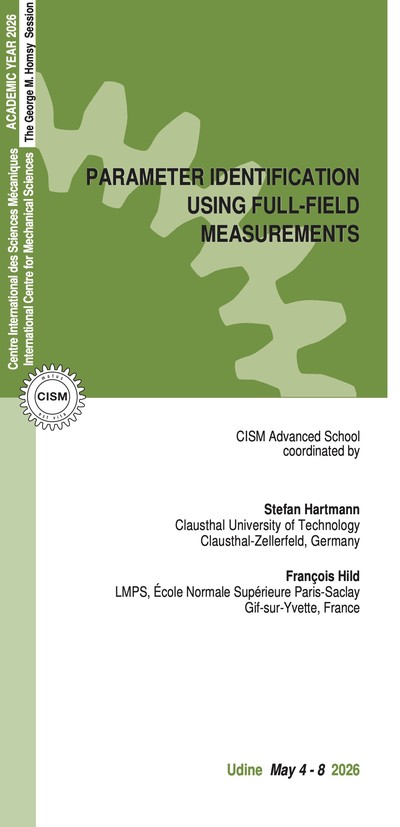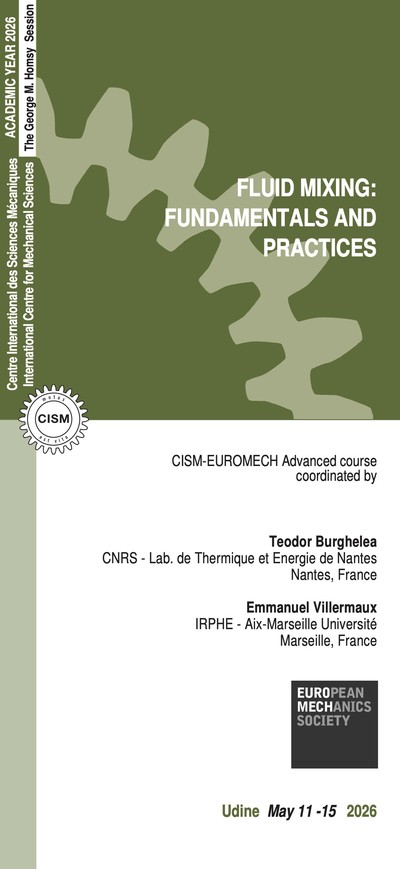Nonconservative mechanical systems have been examined since the end of the XIX-th century when Greenhill posed a problem on the buckling of a screw-shaft of a steamer subject to both an end thrust and a torsion with the torque vector being tangential to the deformed axis of the shaft (the follower torque). Such follower loads represent non-potential positional forces, also referred to as circulatory or curl forces, producing non-zero work on a closed contour (e.g. optical tweezers can generate a circulatory force field). At the same time Kelvin and Tait, studying problems of planet formation, discovered the destruction of gyroscopic stabilization in rotating ellipsoids filled with liquid by dissipation. This was the first example of dissipation-induced instabilities of negative energy modes. Nowadays dissipative and circulatory forces are recognized as the two fundamental nonconservative forces in the growing number of scientific and engineering disciplines including physics, fluid and solids mechanics, fluid-structure interactions, and modern multidisciplinary research areas such as biomechanics, micro- and nanomechanics, optomechanics, robotics, and material science. From the very beginning, nonconservative systems demonstrated unusual and counter-intuitive dynamics and stability properties. Efficient prediction of flutter and divergence instabilities which, in non-conservative systems can be both desirable, as in energy harvesting and harmful as in aircraft structures, is mathematically challenging. This is due to the non-self-adjoint (non-Hermitian) character of the governing equations that, as a rule, depend on multiple parameters. However, traditional university curricula do not offer a coherent collection of modern mathematical tools for the analysis of multiparameter families of non-self-adjoint differential equations combined with a first-hand demonstration of how they actually work in practical applications. The present course fills this gap and offers a unified view on classical results and recent advances in the dynamics of nonconservative systems. The theoretical fundamentals are presented systematically and include: Lyapunov stability theory, Hamiltonian and reversible systems, negative energy modes, anomalous Doppler effect, non-holonomic mechanics, sensitivity analysis of non-self-adjoint operators, dissipation-induced instabilities, and absolute and convective instabilities. They are applied to engineering situations that include the coupled mode flutter of wings, flags and pipes, flutter in granular materials, piezoelectric mechanical metamaterials, wave dynamics of infinitely long structures, stability of high-speed trains, experimental realization of follower forces, soft-robot locomotion, wave energy converters, friction-induced instabilities, brake squeal, non-holonomic sailing, and stability of bicycles. The course is targeted at young researchers, doctoral students and engineers working in fields associated with the dynamics of structures and materials. The course will help to get a comprehensive and systematic knowledge on the stability, bifurcations and dynamics of nonconservative systems and establish links between approaches and methods developed in different areas of mechanics and physics and modern applied mathematics.
D. Bigoni, Nonlinear Solid Mechanics: Bifurcation Theory and Material Instability, Cambridge University Press, 2012. O. Doaré, Dissipation effect on local and global fluid-elastic instabilities, in Nonlinear Physical Systems, Kirillov and Pelinovsky Eds., Wiley, 2014. O.N. Kirillov, Nonconservative Stability Problems of Modern Physics, De Gruyter, Berlin, Boston, 2013. A.V. Metrikine, H.A. Dieterman, Instability of vibrations of a mass moving uniformly along an axially compressed beam on a visco-elastic foundation, Journal of Sound and Vibration 201(5) (1997) 567-576. A.V. Metrikine, S.N. Verichev, Instability of vibration of a moving oscillator on a flexibly supported Timoshenko beam, Archive of Applied Mechanics 71(9) (2001) 613-624. O.M. O’Reilly, Intermediate Engineering Dynamics: A Unified Treatment of Newton-Euler and Lagrangian Mechanics, Cambridge University Press, New York, 2008. O.M. O'Reilly, Modeling Nonlinear Problems in the Mechanics of Strings and Rods: The Role of the Balance Laws. Springer, New York. To be published in 2017. A. Ruina, R. Pratap, Introduction to Statics and Dynamics, Oxford University Press, http://ruina.tam.cornell.edu/Book/ A. Ruina, Non-holonomic stability aspects of piecewise-holonomic systems, Reports in Mathematical Physics, 42 (1998) 91-100. J.P Meijaard, J. M Papadopoulos, A. Ruina, A.L Schwab, Linearized dynamics equations for the balance and steer of a bicycle: a benchmark and review, Proc. Roy. Soc. A. 463 (2007) 1955–1982. M. J. Coleman, A. Ruina, An uncontrolled walking toy that cannot stand still, Phys. Rev. Lett. 80 (1998) 3658.
Davide Bigoni (None)
6 lectures on:The experimental realization of follower forces and the evidence of flutter and divergence instability. How to experimentally attack the problem of the Ziegler paradox. Flutter and friction. Flutter in continuous media: the case of granular materials.Olivier Doaré (None)
6 lectures on: Coupled mode flutter of wings, flags and pipes. Local and global instabilities of slender structures in axial flow. Damping induced destabilization and negative energy waves in slender structures coupled to a flow. The piezoelectric flag: coupling between mechanical and electrical waves, electrical dissipation- and resonance-induced instabilities.Evan Hemingway (None)
6 lectures on: Modeling nonconservative problems in the dynamics of rods, strings and chains. Applications ranging from classical problems in the dynamics of chains to soft-robot locomotion. Conservative and nonconservative forces and moments in rigid body dynamics. Applications ranging from brake squeal, locomotion, wave energy converters, and toys such as the rattleback and dynabee.Oleg Kirillov (None)
6 lectures on: Reversible- and Hamiltonian-Hopf bifurcation. Krein signature and modes and waves of positive and negative energy. Dissipation-induced instabilities and destabilization paradox. Influence of structure of forces on stability. Stability optimization and poles assignment. Overdamped systems and systems with indefinite damping.Andrei Metrikine (None)
6 lectures on:Should high-speed trains move faster than the waves in the ground? Wave dynamics of infinitely long structures under moving loads. Anomalous Doppler waves and instability of a vehicle on an infinitely long structure.Andy Ruina (None)
6 lectures on: Some things in non-holonomic dynamics. Introduction to non-holonomic dynamics; Degrees of freedom and ‘integrability of constraints’. Relation to the ‘non-holonomic’ angular momentum constraint. Falling cat and related experiments. Simple examples of non-holonomic systems. Sleigh, skateboard, bicycle, ball, disk. How symmetry can prevent stability. Wings and sails as approximate non-holonomic constraints; Non-holonomic sailing vs lift and drag sailing; Non-holonomic airplane.The registration fee is 575.00 Euro + VAT taxes*, where applicable (bank charges are not included). The registration fee includes a complimentary bag, four fixed menu buffet lunches (on Friday upon request), hot beverages, downloadable lecture notes and wi-fi internet access. Applicants must apply at least one month before the beginning of the course. Application forms should be sent on-line through our web site: http://www.cism.it. A message of confirmation will be sent to accepted participants. If you need assistance for registration please contact our secretariat. Applicants may cancel their course registration and receive a full refund by notifying CISM Secretariat in writing (by email) no later than two weeks prior to the start of the course. If cancellation occurs less than two weeks prior to the start of the course, a Euro 50.00 handling fee will be charged. Incorrect payments are subject to Euro 50.00 handling fee. A limited number of participants from universities and research centres who are not supported by their own institutions can be offered board and/or lodging in a reasonably priced hotel or student dormitory, if available. Requests should be sent to CISM Secretariat by February 10, 2017 along with the applicant's curriculum and a letter of recommendation by the head of the department or a supervisor confirming that the institute cannot provide funding. Preference will be given to applicants from countries that sponsor CISM. Information about travel and accommodation is available on our web site, or can be mailed upon request.
* Italian VAT is 22%.
